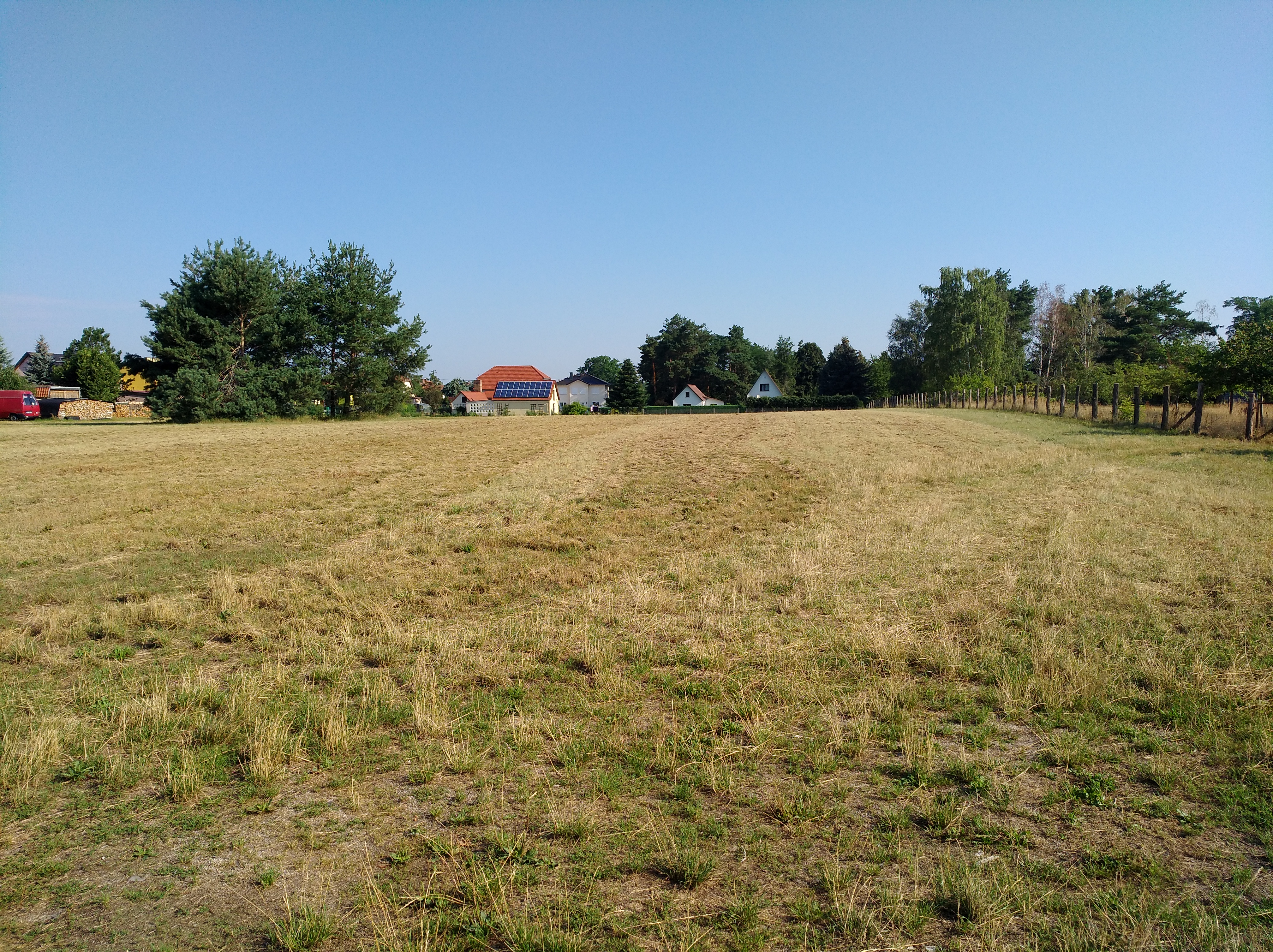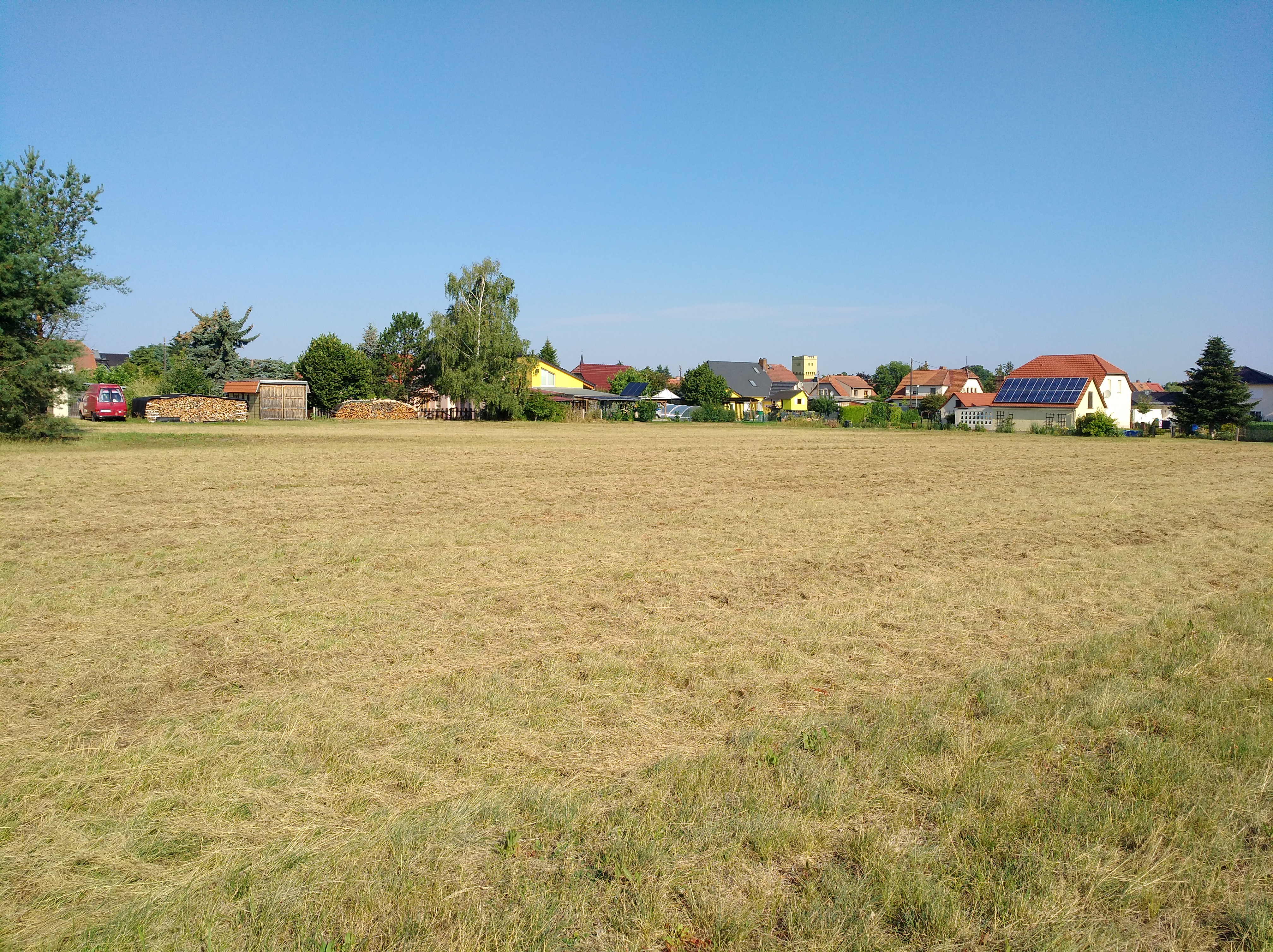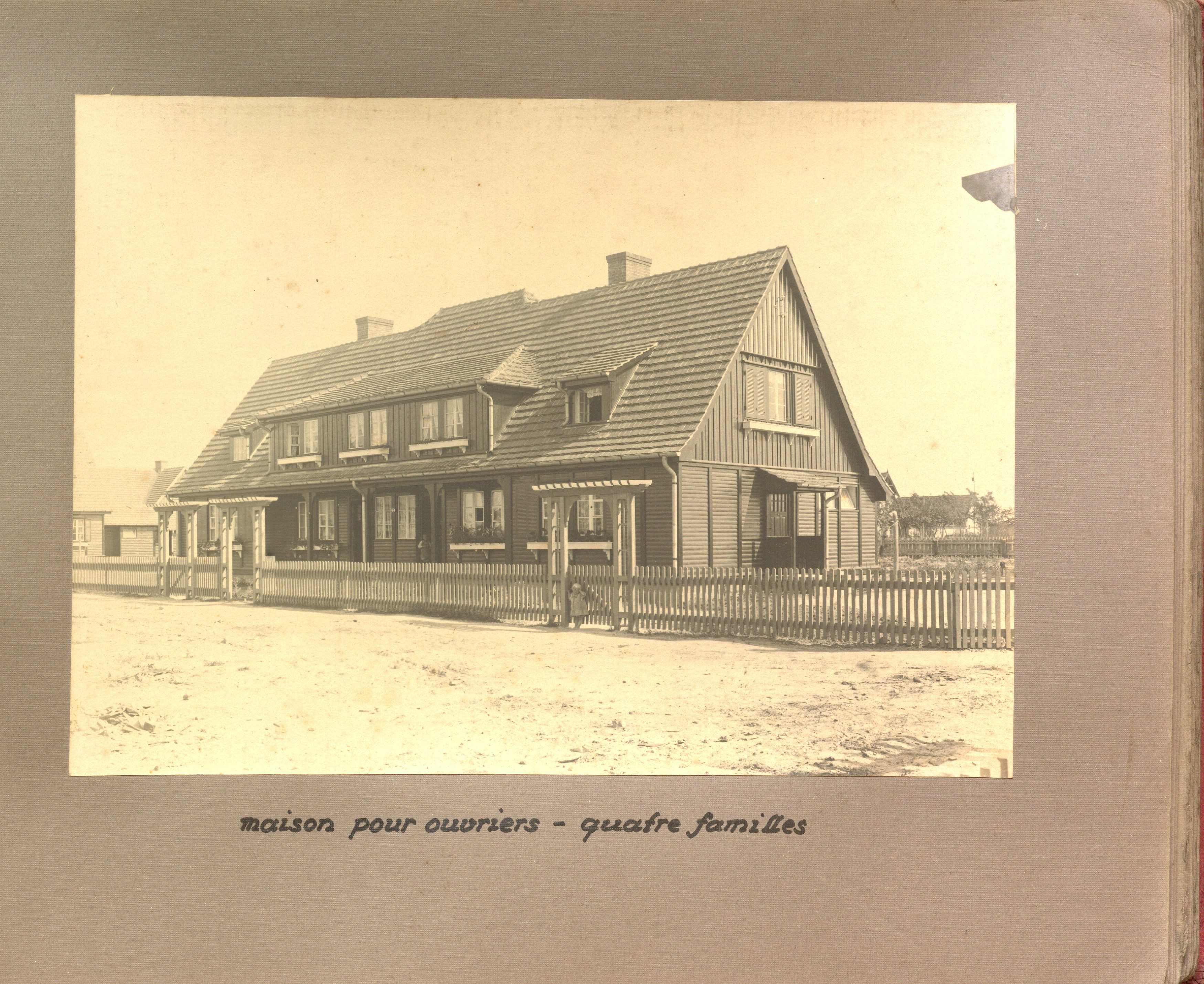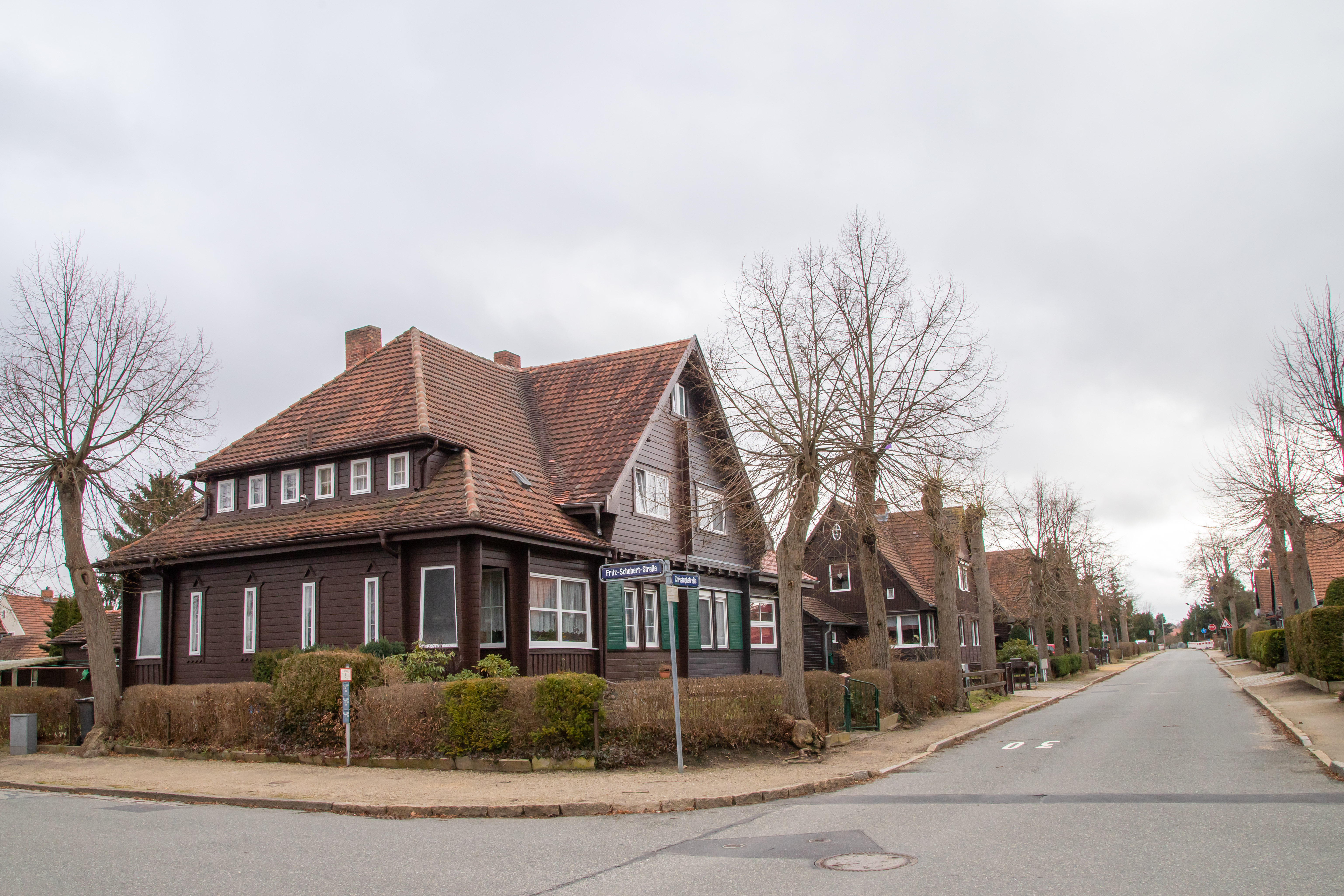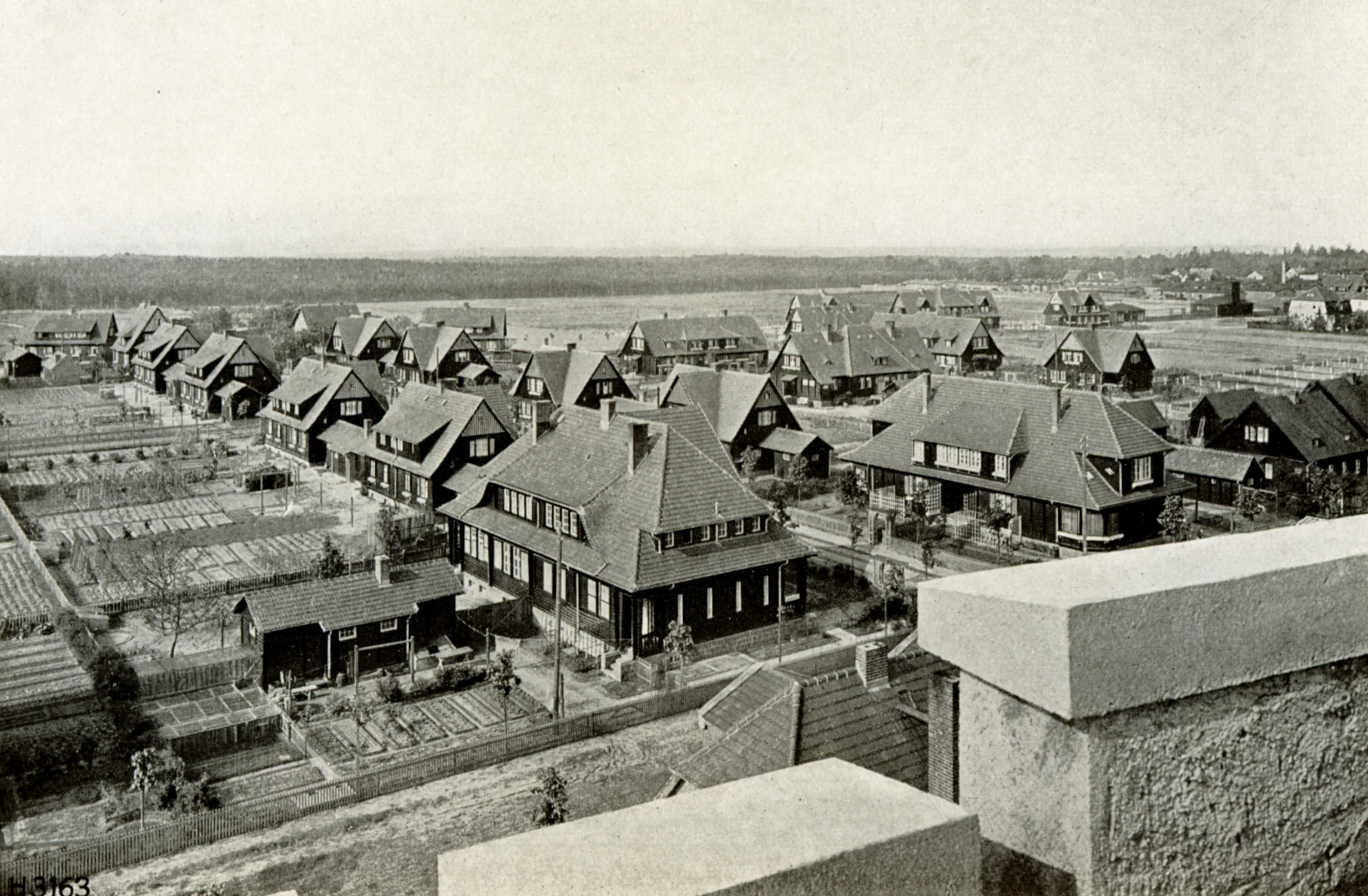Model innovative wooden housing area
New model innovative housing area at the "Cradle of Wood Construction" - a turning point in building
With a new model wooden housing area of single and two familiy houses, that invites the best and most innovative european companies in wooden house construction we will contribute to another "turning point in building" and boost sustainable development.
Through a participatory process terms of the competition are defined, so that accessibility and affordability are assured and the project will connect to the strong tradition of Niesky in innovative wood construction of prefabricated houses.
Through a participatory process terms of the competition are defined, so that accessibility and affordability are assured and the project will connect to the strong tradition of Niesky in innovative wood construction of prefabricated houses.
Germany
Konrad-Wachsmann Straße/Albin Müller Weg, 02906 Niesky
Prototype level
Yes
Yes
Yes
No
No
14626370: Niesky, Stadt (DE)
The project aims to connect to the existing, innovative prefabricated wooden houses built by Christoph & Unmack at the beginning of the 20th century, once global player in wood construction. On an inner-city site, 8 to 10 plots are earmarked for the construction of single and two-family houses. The new, innovative model timber houses will be selected via an EU-wide competition. The terms of the competition will be based on the New European Bauhaus principles and be developed through a participatory process – a board of citizens, representatives of local administration, politics and economy has been set up already. The submitted projects by European companies will be evaluated by a selected jury of recognized experts. The potential and confirmed buyers are involved in the competition and selection process. They have the opportunity to adapt floor plans, space requirements according to their individual needs.
The aim is to promote sustainable and innovative construction with wood and increase the visibility of modern timber construction techniques. In addition, the planned model housing area will further strengthen Niesky's historical significance in timber construction and highlight Niesky as a centre for sustainable and innovative timber construction techniques. Niesky has been a centre of innovative wood design and construction of houses for domestic and commercial uses. Konrad Wachsmann reflected upon his period in Niesky between 1926 and 29 as follows: “It is in this factory for wooden houses where I discovered the path that led me to a turning point in building”.
Innovative model housing areas are currently only being implemented at a few locations in Europe as part of research projects. These are always individual properties. The construction of an entire model housing area is unique in Europe in this context and well placed at the “Cradle of wood Construction” in Niesky, at the intersection of Konrad Wachsmann Straße and Albin Müller Weg.
The aim is to promote sustainable and innovative construction with wood and increase the visibility of modern timber construction techniques. In addition, the planned model housing area will further strengthen Niesky's historical significance in timber construction and highlight Niesky as a centre for sustainable and innovative timber construction techniques. Niesky has been a centre of innovative wood design and construction of houses for domestic and commercial uses. Konrad Wachsmann reflected upon his period in Niesky between 1926 and 29 as follows: “It is in this factory for wooden houses where I discovered the path that led me to a turning point in building”.
Innovative model housing areas are currently only being implemented at a few locations in Europe as part of research projects. These are always individual properties. The construction of an entire model housing area is unique in Europe in this context and well placed at the “Cradle of wood Construction” in Niesky, at the intersection of Konrad Wachsmann Straße and Albin Müller Weg.
model housing area
innovative wood construction
turning point in sustainable building
european wide competition
local and Eurpoean participation
Timber construction plays a key role as a growth driver in regional development through the construction of healthy buildings on ethically sound workplaces, as R&D can only succeed in network alliances and through cooperation at eye level. In this way, the project contributes to sustainable economic development.
By creating more added value in a structurally less developed regions, a substantial contribution is to be made to creating equal living conditions. High-quality employment reduces inequalities (SDG 8,10).
The project focus on the growth sector of timber construction and the inclusion of new technical possibilities in particular will initiate innovation dynamics in rural areas (SDG 9). Low construction costs of a lightweight building material compared to concrete and steel, which can be processed regionally and thus with low transportation costs in a wide variety of ways, contributes to sustainable consumption (SDG 12) and creates affordable living space (SDG 1). Timber buildings have a very high circular economy potential.
The project contributes to the achievement of the sustainability goals in particular by strengthening CO2-saving and CO2-binding regional value creation (SDG 1).
Innovative model housing areas are currently only being implemented at a few locations in Europe as part of research projects. These are always individual properties. The construction of an entire model housing area is unique in Europe in this context.
The opportunity to discover exemplary buildings is the easiest and quickest way to generate progress. Good ideas that have proven themselves in practice are adopted much more quickly by others, developed further and implemented elsewhere.
By creating more added value in a structurally less developed regions, a substantial contribution is to be made to creating equal living conditions. High-quality employment reduces inequalities (SDG 8,10).
The project focus on the growth sector of timber construction and the inclusion of new technical possibilities in particular will initiate innovation dynamics in rural areas (SDG 9). Low construction costs of a lightweight building material compared to concrete and steel, which can be processed regionally and thus with low transportation costs in a wide variety of ways, contributes to sustainable consumption (SDG 12) and creates affordable living space (SDG 1). Timber buildings have a very high circular economy potential.
The project contributes to the achievement of the sustainability goals in particular by strengthening CO2-saving and CO2-binding regional value creation (SDG 1).
Innovative model housing areas are currently only being implemented at a few locations in Europe as part of research projects. These are always individual properties. The construction of an entire model housing area is unique in Europe in this context.
The opportunity to discover exemplary buildings is the easiest and quickest way to generate progress. Good ideas that have proven themselves in practice are adopted much more quickly by others, developed further and implemented elsewhere.
Niesky has been a centre of innovative wood design and construction of houses for domestic and commercial uses. Konrad Wachsmann reflected upon his period in Niesky between 1926 and 29 as follows: “It is in this factory for wooden houses where I discovered the path that led me to a turning point in building”. He was very highly contributing to the "Moderne".
More than 100 fabricated wooden houses arranged in three historical model housing areas and are carefully maintained by the inhabitants. Since 2022 a street festival is annually helt in one of the historical model housing areas. Organized by the local inhabitants the festival is strengthening our community and local identity. The festival is also a networking platform for many stakeholders in wood construction.
The golden area of prefabricated house production ended with the second world war and has not been taken up again by in times of the German Democratic Republic. This is among other reasons due to the strong engagement of the globally known company Christoph & Unmack AG in development of low-cost standards and designs for barracks made from wood for housing for labour and concentration camps.
Of late though, architects and companies manufacturing prefabricated houses show increasing interest to settle again in the German “Cradle of Wood Construction”. This provides an excellent opportunity for transforming both, historical relevance and future of Niesky. Reconciling the past with future development and creating space for another “turning point in sustainable building” is a strong development boost for our municipality.
With another modern model housing area we will reconnect to our roots and at the same time earmarke high quality of housing and add value to our housing and consruction culture.
More than 100 fabricated wooden houses arranged in three historical model housing areas and are carefully maintained by the inhabitants. Since 2022 a street festival is annually helt in one of the historical model housing areas. Organized by the local inhabitants the festival is strengthening our community and local identity. The festival is also a networking platform for many stakeholders in wood construction.
The golden area of prefabricated house production ended with the second world war and has not been taken up again by in times of the German Democratic Republic. This is among other reasons due to the strong engagement of the globally known company Christoph & Unmack AG in development of low-cost standards and designs for barracks made from wood for housing for labour and concentration camps.
Of late though, architects and companies manufacturing prefabricated houses show increasing interest to settle again in the German “Cradle of Wood Construction”. This provides an excellent opportunity for transforming both, historical relevance and future of Niesky. Reconciling the past with future development and creating space for another “turning point in sustainable building” is a strong development boost for our municipality.
With another modern model housing area we will reconnect to our roots and at the same time earmarke high quality of housing and add value to our housing and consruction culture.
Our project contributes to inclusion on two levels.
At the first level a participatory board (Kommunaler Entwicklungsbeirat) has been set up by the municipal council. The board consists out of 25 persons: citizens, representatives of local administration, politics and economy, hand picked and carefully selected through an application process. Such participatory boards mandated by the municipal council are a new governance approach that ensures that all views and perspectives of different stakeholder groups contribute to a certain development question. This means that different needs are reflected.
The participatory board (Kommunaler Entwicklungsbeirat) is dealing with the question how development of the region can build on past successful development pathes at one side and create new future development pathes on the other side. The strong tradition in wood construction was therefore chosen as a starting point. It was soon clear, that a new model housing area would be an excellent opportunity to reconnect to the past and create space for another "turning point in sustainbale building".
The participatory board will develop the terms of the competition based on the New European Bauhaus principles.
On the second level, the potential and confirmed buyers of the wooden houses are involved in the competition and selection process. They have the opportunity to adapt floor plans, space requirements according to their individual needs and budget, so that affordability and accessability are reached.
The participatory process and the results will be carefully documented in order to enablöe transferability.The opportunity to discover exemplary buildings is the easiest and quickest way to generate progress. Good ideas that have proven themselves in practice are adopted much more quickly by others, developed further and implemented elsewhere.
At the first level a participatory board (Kommunaler Entwicklungsbeirat) has been set up by the municipal council. The board consists out of 25 persons: citizens, representatives of local administration, politics and economy, hand picked and carefully selected through an application process. Such participatory boards mandated by the municipal council are a new governance approach that ensures that all views and perspectives of different stakeholder groups contribute to a certain development question. This means that different needs are reflected.
The participatory board (Kommunaler Entwicklungsbeirat) is dealing with the question how development of the region can build on past successful development pathes at one side and create new future development pathes on the other side. The strong tradition in wood construction was therefore chosen as a starting point. It was soon clear, that a new model housing area would be an excellent opportunity to reconnect to the past and create space for another "turning point in sustainbale building".
The participatory board will develop the terms of the competition based on the New European Bauhaus principles.
On the second level, the potential and confirmed buyers of the wooden houses are involved in the competition and selection process. They have the opportunity to adapt floor plans, space requirements according to their individual needs and budget, so that affordability and accessability are reached.
The participatory process and the results will be carefully documented in order to enablöe transferability.The opportunity to discover exemplary buildings is the easiest and quickest way to generate progress. Good ideas that have proven themselves in practice are adopted much more quickly by others, developed further and implemented elsewhere.
A participatory board (Kommunaler Entwicklungsbeirat) has been set up by the municipal council. The board consists out of 25 persons: citizens, representatives of local administration, politics and economy, hand picked and carefully selected through an application process. Such participatory boards mandated by the municipal council are a new governance approach that ensures that all views and perspectives of different stakeholder groups contribute to a certain development question.
The participatory board (Kommunaler Entwicklungsbeirat) is dealing with the question how development of the region can build on past successful development pathes at one side and create new future development pathes on the other side. The strong tradition in wood construction was therefore chosen as a starting point. It was soon clear, that a new model housing area would be an excellent opportunity to reconnect to the past and create space for another "turning point in sustainbale building".
The participatory board will develop the terms of the competition based on the New European Bauhaus principles, but also will develop ideas to reach civily society and to create momentum for wooden housing concepts. The wooden housing festival is becoming a more and more important event in our region, attracting also people and companies from neighbouring countries from Poland and Czech Republic. So the board ha s a very strong impact on the initiative on one side, but civil society will also be impacted by the initiative. The next wooden housing festival will for sure be helt in the new model housing area.
The participatory board (Kommunaler Entwicklungsbeirat) is dealing with the question how development of the region can build on past successful development pathes at one side and create new future development pathes on the other side. The strong tradition in wood construction was therefore chosen as a starting point. It was soon clear, that a new model housing area would be an excellent opportunity to reconnect to the past and create space for another "turning point in sustainbale building".
The participatory board will develop the terms of the competition based on the New European Bauhaus principles, but also will develop ideas to reach civily society and to create momentum for wooden housing concepts. The wooden housing festival is becoming a more and more important event in our region, attracting also people and companies from neighbouring countries from Poland and Czech Republic. So the board ha s a very strong impact on the initiative on one side, but civil society will also be impacted by the initiative. The next wooden housing festival will for sure be helt in the new model housing area.
At local level the participatory board (Kommunaler Entwicklungsbeirat) set up by the municipal council is the main instrument to engage different stakeholders.
At regional level there is also a network of companies in wood construction and timber industries that regularly exchanges ideas, arranges trainings and joint projects. The network has strongly promoted the idea of creating a new model housing area in Niesky.
At regional (provinicial) level the Union of architects (Bund der Architekten) and the Holzbau Kompetenzzentrum Sachsen GmbH, an advisory company are contributing to the success of the project.Holzbau Kompetenz Sachsen GmbH (HKS) was founded as part of the timber construction initiative of the Saxon state government. Its mission is to promote the use of wood in the construction industry in Saxony and to play a key role in improving the necessary framework conditions. The HKS also promotes value creation in Saxony and the players in the construction industry through qualification and further training in the field of timber construction. One of the most important tasks of the HKS is to offer private and public building owners independent specialist advice on the development and implementation of timber construction projects. To this end, it has built up a strong partner network with experienced clients and qualified architects, engineers and timber construction companies.
At national and European level companies are invited to take part in the competetion for housing concepts. Since the project idea has been already communicated among experts we already received several requests. The housing area gives room for 8 - 10 single or two family houses.
At regional level there is also a network of companies in wood construction and timber industries that regularly exchanges ideas, arranges trainings and joint projects. The network has strongly promoted the idea of creating a new model housing area in Niesky.
At regional (provinicial) level the Union of architects (Bund der Architekten) and the Holzbau Kompetenzzentrum Sachsen GmbH, an advisory company are contributing to the success of the project.Holzbau Kompetenz Sachsen GmbH (HKS) was founded as part of the timber construction initiative of the Saxon state government. Its mission is to promote the use of wood in the construction industry in Saxony and to play a key role in improving the necessary framework conditions. The HKS also promotes value creation in Saxony and the players in the construction industry through qualification and further training in the field of timber construction. One of the most important tasks of the HKS is to offer private and public building owners independent specialist advice on the development and implementation of timber construction projects. To this end, it has built up a strong partner network with experienced clients and qualified architects, engineers and timber construction companies.
At national and European level companies are invited to take part in the competetion for housing concepts. Since the project idea has been already communicated among experts we already received several requests. The housing area gives room for 8 - 10 single or two family houses.
There are different disciplines and knowledge fields, such as architecture, timber industries, craftmen, wood technologies and regional development. But also policy and governance is an important knowledge field contributing to anchoring the project, assuring inclusion and cultural binding and aesthetical and emotional acceptance.
At regional level the network of companies in wood construction and timber industries that regularly exchanges ideas, arranges trainings and developes joint projects has strongly promoted the idea of creating a new model housing area in Niesky.
At local level the participatory board (Kommunaler Entwicklungsbeirat) set up by the municipal council will set teh terms of competetion using the advice of the Union of architects (Bund der Architekten) and the Holzbau Kompetenzzentrum Sachsen GmbH, an advisory company.
At regional level the network of companies in wood construction and timber industries that regularly exchanges ideas, arranges trainings and developes joint projects has strongly promoted the idea of creating a new model housing area in Niesky.
At local level the participatory board (Kommunaler Entwicklungsbeirat) set up by the municipal council will set teh terms of competetion using the advice of the Union of architects (Bund der Architekten) and the Holzbau Kompetenzzentrum Sachsen GmbH, an advisory company.
Innovative model housing areas are currently only being implemented at a few locations in Europe as part of research projects. These are always individual properties. The construction of an entire model housing area is unique in Europe in this context. The opportunity to discover exemplary buildings is the easiest and quickest way to mainstream actions.Good ideas that have proven themselves in practice are adopted much more quickly by others, developed further and implemented elsewhere.
Through our annual wooden houses festival teh new model area will reach out to a wide audience, which again assures mainstreaming ideas, concepts and actions.
The Kommunaler Entwicklungsbeirat, a board set up by the municipal council is a strong success factor for mainstreaming too. The board is impacting the project directly through designing the terms of competetion and also contributes to multiplication of ideas (https://kebniesky.blog/).
Through our annual wooden houses festival teh new model area will reach out to a wide audience, which again assures mainstreaming ideas, concepts and actions.
The Kommunaler Entwicklungsbeirat, a board set up by the municipal council is a strong success factor for mainstreaming too. The board is impacting the project directly through designing the terms of competetion and also contributes to multiplication of ideas (https://kebniesky.blog/).
1. Participatory approach through the Kommunaler Entwicklungsbeirat, a board set up by the municipal council. The board consists out of 25 persons: citizens, representatives of local administration, politics and economy, hand picked and carefully selected through an application process. Such participatory boards mandated by the municipal council are a new governance approach that ensures that all views and perspectives of different stakeholder groups contribute to a certain development question. This approach so far has been implemented by 10 communities only.
2. A model housing area is a unique approach. Innovative model housing areas are currently only being implemented at a few locations in Europe as part of research projects. These are always individual properties. The construction of an entire model housing area is unique in Europe in this context
3. Reconnecting strong traditional development pathes with future development pathes is a strong success factor. The model area is well placed at the “Cradle of wood Construction” in Niesky, at the intersection of Konrad Wachsmann Straße and Albin Müller Weg.
3. The EU wide competition ensures that the most innovative wooden houses building concepts will be represented at the model houisng area.
2. A model housing area is a unique approach. Innovative model housing areas are currently only being implemented at a few locations in Europe as part of research projects. These are always individual properties. The construction of an entire model housing area is unique in Europe in this context
3. Reconnecting strong traditional development pathes with future development pathes is a strong success factor. The model area is well placed at the “Cradle of wood Construction” in Niesky, at the intersection of Konrad Wachsmann Straße and Albin Müller Weg.
3. The EU wide competition ensures that the most innovative wooden houses building concepts will be represented at the model houisng area.
In cooperation with the Holzbau Kompetenzzentrum Sachsen, further training seminars and specialist conferences on modern timber construction will be held in Niesky in future, which will include the model timber house developments. Training and research at the TU Dresden and the planned construction research center (LAB) will make an important contribution to the long-term success of these training courses. This should ensure that Niesky remains a place of innovation and progress in modern timber construction.
Further innovative model housing areas can be built in Niesky and the surrounding communities. This provides the opportunity to further develop the entire location for timber construction.
With the construction of the model house area, the project region is experiencing a strengthening of timber construction and an attraction for the municipality and cooperation of companies in wood construction. Whereas 100 years ago, a local company operating on the global market built model housing estates for marketing purposes and to retain workers, today the model housing estate is intended to encourage companies to settle here. In this way, it contributes to structural change and boost development.
Further innovative model housing areas can be built in Niesky and the surrounding communities. This provides the opportunity to further develop the entire location for timber construction.
With the construction of the model house area, the project region is experiencing a strengthening of timber construction and an attraction for the municipality and cooperation of companies in wood construction. Whereas 100 years ago, a local company operating on the global market built model housing estates for marketing purposes and to retain workers, today the model housing estate is intended to encourage companies to settle here. In this way, it contributes to structural change and boost development.
The project adresses the global challenge of sustainability in the housing sector through a model housing area. .
Timber construction plays a key role as a growth driver in regional development through the construction of healthy buildings on ethically sound workplaces, as R&D can only succeed in network alliances and through cooperation at eye level. In this way, the project contributes to sustainable economic development.
By creating more added value in a structurally less developed regions, a substantial contribution is to be made to creating equal living conditions. High-quality employment reduces inequalities (SDG 8,10).
The project focus on the growth sector of timber construction and the inclusion of new technical possibilities in particular will initiate innovation dynamics in rural areas (SDG 9). Low construction costs of a lightweight building material compared to concrete and steel, which can be processed regionally and thus with low transportation costs in a wide variety of ways, contributes to sustainable consumption (SDG 12) and creates affordable living space (SDG 1). Timber buildings have a very high circular economy potential.
The project contributes to the achievement of the sustainability goals in particular by strengthening CO2-saving and CO2-binding regional value creation (SDG 1).
Timber construction plays a key role as a growth driver in regional development through the construction of healthy buildings on ethically sound workplaces, as R&D can only succeed in network alliances and through cooperation at eye level. In this way, the project contributes to sustainable economic development.
By creating more added value in a structurally less developed regions, a substantial contribution is to be made to creating equal living conditions. High-quality employment reduces inequalities (SDG 8,10).
The project focus on the growth sector of timber construction and the inclusion of new technical possibilities in particular will initiate innovation dynamics in rural areas (SDG 9). Low construction costs of a lightweight building material compared to concrete and steel, which can be processed regionally and thus with low transportation costs in a wide variety of ways, contributes to sustainable consumption (SDG 12) and creates affordable living space (SDG 1). Timber buildings have a very high circular economy potential.
The project contributes to the achievement of the sustainability goals in particular by strengthening CO2-saving and CO2-binding regional value creation (SDG 1).
Next steps:
1. The building area regulations will be approved by summer 2025 providing for the leagl framework and space for teh establishment of a model housing area accoding to the NEB values.
2. The participatory board will discuss mainstreaming wood construction at all levels and the terms of competition. NEB values and working principles will be incorporated. Next session are scheduled for the 5th of April, the 17th of May, the 21st of June. Presentation of results to a wider audience will be during teh wooden housing festival at the 15th of June and to teh Municipal Council at the 1st of September 2025.
3. In September and October 2025 the Call for competition will be announced, preferably with support of the communictaion package along with the NEB Boost Price.
4. The Jury will choose the projects in the beginning of 2026, so that final construction to the byers needs, approval and building can start in 2026. The approving administration (Bauaufsicht) is involved from the very beginning so that smooth approval willl be assured.
1. The building area regulations will be approved by summer 2025 providing for the leagl framework and space for teh establishment of a model housing area accoding to the NEB values.
2. The participatory board will discuss mainstreaming wood construction at all levels and the terms of competition. NEB values and working principles will be incorporated. Next session are scheduled for the 5th of April, the 17th of May, the 21st of June. Presentation of results to a wider audience will be during teh wooden housing festival at the 15th of June and to teh Municipal Council at the 1st of September 2025.
3. In September and October 2025 the Call for competition will be announced, preferably with support of the communictaion package along with the NEB Boost Price.
4. The Jury will choose the projects in the beginning of 2026, so that final construction to the byers needs, approval and building can start in 2026. The approving administration (Bauaufsicht) is involved from the very beginning so that smooth approval willl be assured.

